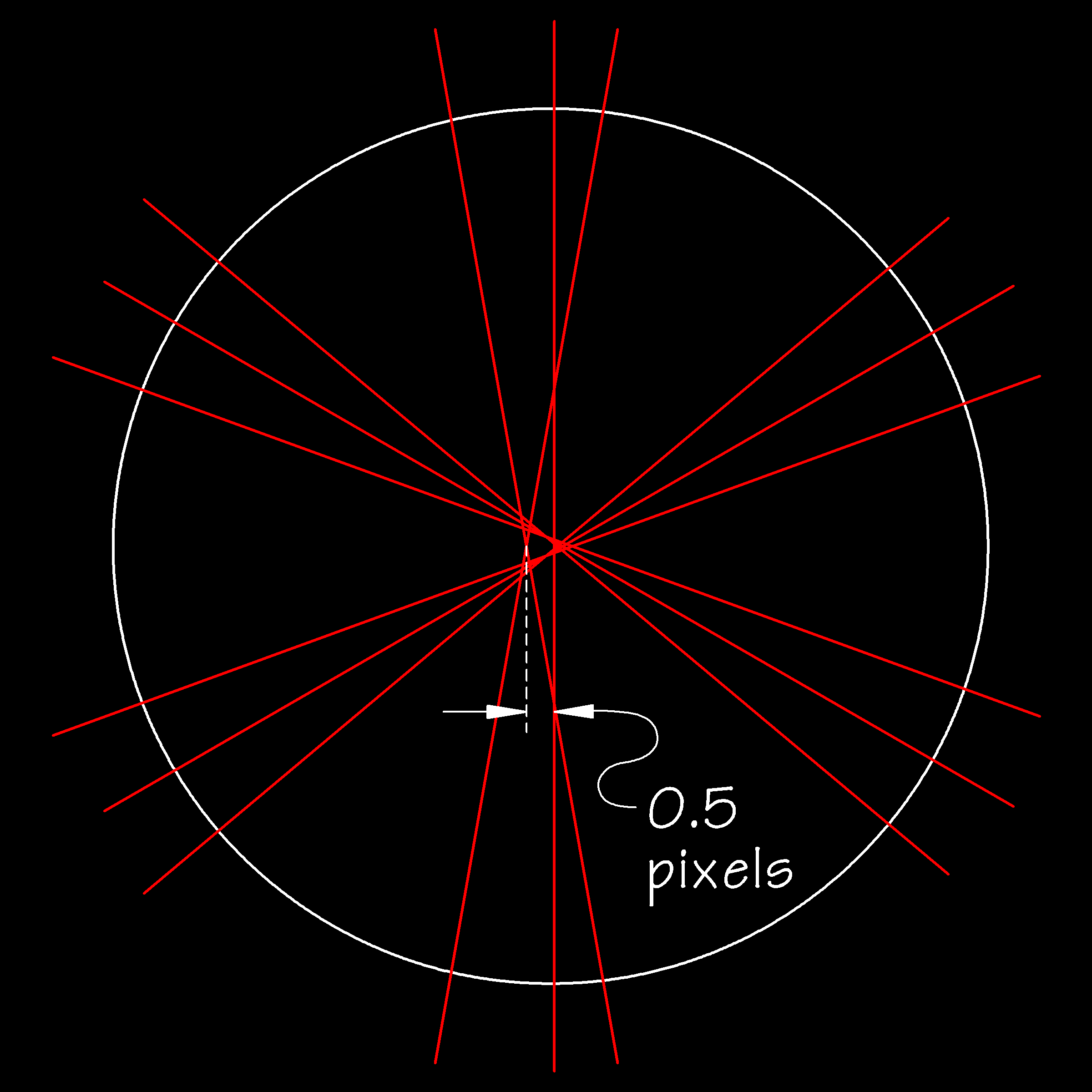Collimation Overview
Collimation, a word related to collinear or 'in-line', means that all optical elements are centered and square to the optical axis of a telescope and imaging system. In the simplest case, the optical axis of a refractor telescope with no diagonal runs down the center of the optical tube. Collimation for this simplest case means that the center of each lens is on the optical axis and each lens is perpendicular to the optical axis. The same 'centered and square' applies to any mirrors in reflecting and catadioptric systems. Because the CCD imager is part of the optical system, collimation also means that the CCD chip is centered on and square to the optical axis.
Some telescope designs use a diagonal mirror designed to reflect light rays 90 degrees out the side of the optical tube, such as Newtonian reflectors. In these cases, the optical axis bends with the diagonal mirror and any optical elements placed after the diagonal must align to that portion of the optical axis.
Strictly speaking collimation goes beyond 'centered and square'. All optical systems are designed with the optical elements at specific positions relative to one another. For example, lenses in an air-spaced multi-element refractor must be accurately spaced, primary and secondary mirrors of Cassegrains must be accurately separated, and after-market focal reducers, field flatteners, and field correctors must be accurately positioned. Also focus draw tubes should be well-centered and move parallel to the optical axis and filter holders should be well-centered.
Collimation Accuracy
|
|
| Spot Diagram: 100 mm triplet apochromatic refractor, first element tilted by 4 µm, CCD pixel size 6 µm, 200x magnification |
How close is close enough for collimation accuracy? The now well-known mirror grinding error on the Hubble Space Telescope (HST) primary mirror was as little as 4 micrometers (microns) at the edge of a 2.4 meter (94.5 inch) mirror. The error was less than 0.0002 percent relative to the diameter of the mirror. A truly tiny error both relatively and absolutely. Yet, it had easily noticeable effects on the early HST images. Of course, the HST operates outside the earth's atmosphere and avoids the blurring effect of astronomical seeing which might otherwise obscure the effects in earth based imaging.
For comparison consider a 100 mm triplet apochromatic refractor. Imagine the first element of that triplet is not exactly spaced but is tilted by the same 4 micrometers (microns) at one edge, say the spacer was assembled with a grain of dust under one edge. That error amounts to a larger, although still very small, 0.004 percent relative to the diameter of the lens. To the right is the on-axis spot diagram on a CCD with 6 micrometers (microns) pixels.
The image to the right shows what should have been a pin-point sharp spot diagram has expanded to nearly a full pixel across due to a 4 micrometer (micron) misalignment of one lens of the triplet. Given that the full-width at half-maximum (FWHM) of the Airy disk of this imaging setup is under 1.0 pixels, the aberration introduced by the misalignment will certainly affect the final image even after astronomical seeing blurs the spot.
Most good quality mounts and auto-guiders are capable of sub-pixel auto-guiding accuracy. This sub-pixel auto-guiding standard for high-quality imaging further reinforces that any aberration amounting to a fraction of a pixel is a significant aberration to be avoided if possible.
By most qualitative standards the aberration caused by a 4 micrometer (micron) misalignment is significant. The true test of "how close is close enough?" is whether the effect is measurable in the final image.
GoldFocus Plus Collimation Measurement
GoldFocus Plus uses a diffraction mask and analysis software to measure very specific locations in a star's diffracted spot diagram. Below is the idealized diffraction pattern generated by the GoldFocus Plus mask for the above spot diagram with the 100 mm triplet apochromatic refractor misaligned by 4 micrometers (microns). GoldFocus Plus measures the 100 mm triplet apochromatic refractor collimation as being out by 0.5 pixels.

|
| GoldFocus Plus Collimation Measurement: 100 mm triplet apochromatic refractor, first element tilted by 4 µm, CCD pixel size 6 µm |

